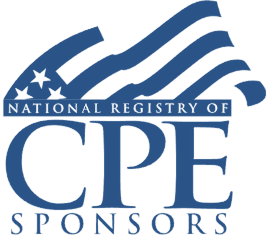- videocam On-Demand
- signal_cellular_alt Intermediate
- card_travel Tax Preparer
- schedule 110 minutes
Trust Establishment and Termination: Avoiding Common Errors
Funding, Choosing a Trustee, Situs, Final Distributions, Excess Deductions on Termination, Loss Carryforwards
Welcome! Save 30% on all CLE, CPE, and Professional Skills webinars, plus 15% off any annual pass with code CYBER2025
About the Course
Introduction
This webinar will review the primary concerns of grantors, taxpayers, and trust and estate professionals when forming and terminating trusts. Our panel will discuss initial concerns, including trust situs, funding a trust, and selecting an appropriate trustee. Our experts will cover finalizing a trust and discuss terminating events, final distributions, and the tax consequences of final year distributions.
Description
A properly established trust can provide a method to transfer assets after death, asset protection, Medicare eligibility, and estate tax savings. There are key aspects a grantor must consider when forming a trust to secure these benefits. The type of trust, trustee chosen, and location of the trust all affect its subsequent taxation and administration. One of the most common trust errors is improperly funding or failing to fund a trust after it is established.
On the other end, when a trust terminates, final distributions should be made following the grantor's intentions. Income allocations, excess deductions on termination, and loss carryforwards must be reported to beneficiaries. Trust professionals need to be aware of terminating events. A properly established trust and trust document can circumvent future problems and tax issues.
Listen as our authoritative panel of trust and estate veterans explains critical concerns when forming and ending trusts to avoid common errors.
Presented By

Mr. Allen focuses his practice on estate planning, income tax planning, business planning, and probate and estate administration. He counsels clients on the design and implementation of tax efficient estate and business plans, and represents executors in all phases of estate administration, including probate administration, preparation of federal estate tax returns, and the settlement of the estate. Specifically, Mr. Allen works with his clients to ensure their goals are met with regard to the disposition of their estate while also maximizing the use of credits and exemptions from federal estate and gift taxes and planning for income taxes. He has extensive experience advising, drafting, and administering trusts, as well as in the charitable and non-profit arena. Mr. Allen also represents clients with respect to the establishment, operation, taxation, re-organization and restructuring, business succession, and tax reporting requirements of their business as well as advises on business related transactions including the disposition of a business.

Mr. Edmondson practices in partnership, corporate, and individual tax planning; business transactions including mergers and acquisitions; business planning; tax controversy; estate and wealth transfer planning; probate; estate and trust litigation; asset protection; and charitable planning. He has conducted, authored, and directed numerous seminars for professional, academic, and civic groups on taxation, business, asset protection and estate planning. Mr. Edmondson works closely with clients to develop and implement such strategies.
-
BARBRI is a NASBA CPE sponsor and this 110-minute webinar is accredited for 2.0 CPE credits.
-
BARBRI is an IRS-approved continuing education provider offering certified courses for Enrolled Agents (EA) and Tax Return Preparers (RTRP).
Date + Time
- event
Wednesday, June 29, 2022
- schedule
1:00 p.m. ET./10:00 a.m. PT
- Establishing and terminating trusts: introduction
- Establishing a trust
- Types of trusts
- Situs
- Selecting a trustee
- Funding a trust
- Other issues
- Terminating a trust
- Determining final distributions
- Terminating events
- Tax consequences
- Other issues
The panel will review these and other critical issues:
- How trust situs is determined, and how it affects taxation of a trust
- Evaluating trustee choices, including co-trustees, family, friends, professionals, and institutions
- Reporting excess deductions on terminations and loss carryforwards in the final year
- Key provisions in a trust document
Learning Objectives
After completing this course, you will be able to:
- Identify key provisions in trust documents affecting taxation
- Determine how the type of trust affects its taxation
- Ascertain when a professional could be a better trustee choice than a friend or family member
- Decide when excess deductions on terminations are passed to beneficiaries
- Field of Study: Taxes
- Level of Knowledge: Intermediate
- Advance Preparation: None
- Teaching Method: Seminar/Lecture
- Delivery Method: Group-Internet (via computer)
- Attendance Monitoring Method: Attendance is monitored electronically via a participant's PIN and through a series of attendance verification prompts displayed throughout the program
- Prerequisite: Three years+ business or public firm experience preparing complex tax forms and schedules, supervising other preparers or accountants. Specific knowledge and understanding of estate, gift and trust taxation including various trusts types, the unified credit, and portability.

BARBRI, Inc. is registered with the National Association of State Boards of Accountancy (NASBA) as a sponsor of continuing professional education on the National Registry of CPE Sponsors. State boards of Accountancy have final authority on the acceptance of individual courses for CPE Credits. Complaints regarding registered sponsons may be submitted to NASBA through its website: www.nasbaregistry.org.

BARBRI is an IRS-approved continuing education provider offering certified courses for Enrolled Agents (EA) and Tax Return Preparers (RTRP).

BARBRI CE webinars-powered by Barbri-are backed by our 100% unconditional money-back guarantee: If you are not satisfied with any of our products, simply let us know and get a full refund. Contact us at 1-800-926-7926 .
Unlimited access to premium CLE courses:
- Annual access
- Available live and on-demand
- Best for attorneys and legal professionals
Unlimited access to premium CPE courses.:
- Annual access
- Available live and on-demand
- Best for CPAs and tax professionals
Unlimited access to premium CLE, CPE, Professional Skills and Practice-Ready courses.:
- Annual access
- Available live and on-demand
- Best for legal, accounting, and tax professionals
Unlimited access to Professional Skills and Practice-Ready courses:
- Annual access
- Available on-demand
- Best for new attorneys
Related Courses

Deducting Trust and Estate Charitable Donations: Trust Provisions and Wills, Recent Court Cases, Reporting Issues
Thursday, January 22, 2026
1:00 p.m. ET./10:00 a.m. PT

Tax Research Techniques: Internet Tools, AI Caveats, Methodology, Documentation and Communication of Results
Wednesday, January 21, 2026
1:00 p.m. ET./10:00 a.m. PT

Recent IRS S Corporation Initiative: Losses in Excess of Basis, Taxable Distributions, Handling the Examination
Friday, January 16, 2026
1:00 p.m. ET./10:00 a.m. PT

Family Office Tax Update: Foundational Principles and Emerging Issues
Available On-Demand
Recommended Resources

How CPE Can Bridge the Gap Between What You Know and What You Need to Know
- Career Advancement


